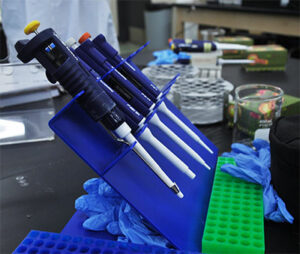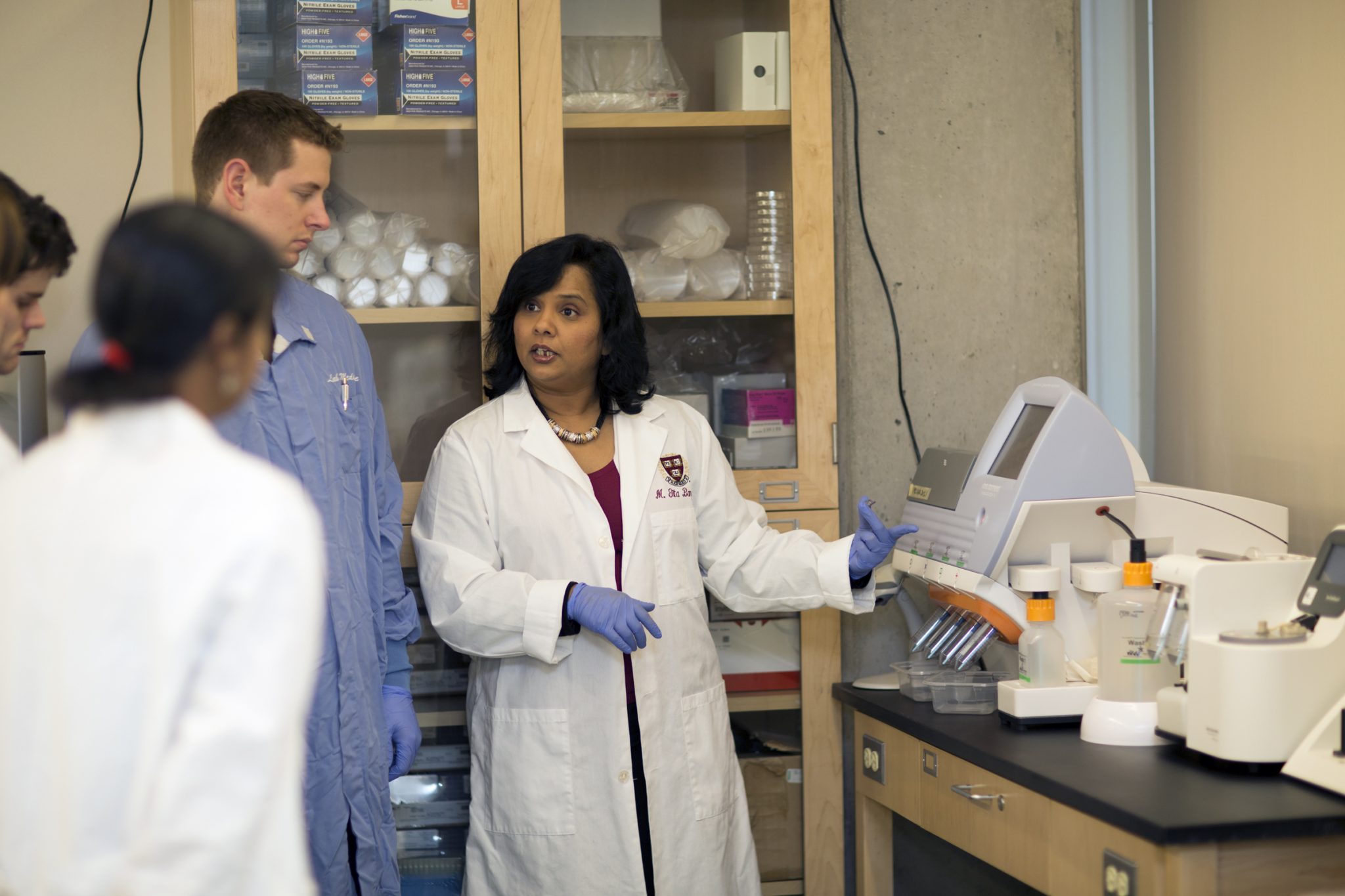Project Background:
Take-all, a fungal disease, represents a serious threat to wheat production. The bacterium Pseudomonas fluorescens L5.1-96 provides a potential solution to Take-all. Students in this course sequence the genome to help identify new genes that play a role in disease control.
 GGT (Gaeumanomyces graminis var. tritici) is the fungus that causes Take-All. The fungus grows in the root of the plant and prevents the plant from receiving water and nutrient supplies.
GGT (Gaeumanomyces graminis var. tritici) is the fungus that causes Take-All. The fungus grows in the root of the plant and prevents the plant from receiving water and nutrient supplies.
Take-all-decline is a natural biological phenomenon that controls the growth of the take-all disease. Biological control is the use of natural or modified organisms, or genes to reduce the effects of undesirable organisms such as pests and to factor desirable organisms such as crops, trees, animals, and beneficial insects and microorganisms. The biological control used in this project is Pseudomonas fluorescens strains that produce the polyketide antibiotic 2,4-diacetylphloroglucinol (DAPG) that are key components of the natural biological control in take-all decline soils. DAPG-producing strains contain phID, which encodes polyketide synthase. Over 20 different genotypes of DAPG- P. fluorescens strains have been identified.
With the ComGen project, students are sequencing the P. fluorescens L5.1-96 genome and identify new genes that may play a huge role in disease control. They will research on the similarity/differences of the gene with those of the family of strains that produce DAPG. Students will find out what roles their individual researched genes play in biological disease control.
General Course Description:
This course is taught in the following courses at Bellevue College and serves as the entire laboratory curriculum for a quarter long course. Students must have a prerequisite of BIO 160 or BIO 211, or an AP Biology score of 4 or 5.
- BIO 211 Biology Majors Cellular: First in a three-course sequence for science majors and pre-professional students. Topics include cell structure, metabolism and energetics, genetic control of life, biotechnology, and an introduction to evolution
- BIO 275+276 Laboratory Methods in Genomics: Introduces the use of laboratory tools and techniques to sequence DNA. Topics covered include DNA structures and gene expression. Emphasis on experimental methods and design. Students learn to think critically about research methodology and scientific investigation.
- 299 Individual Studies in Biology
BIO 211 is a modified version of BIO 275. The differences between BIO 211 and BIO 275 in regards to the laboratory work are best described by this table:
| Activities | ComGen Research Course | ComGen Majors Biology Course |
|---|---|---|
| number of clones analyzed | 5/student | 1/student pair |
| starting cultures/harvesting cells | yes | yes |
| plasmid isolation | yes | yes |
| QC plasmid by Gel electrophoresis | yes | yes |
| PCR for sanger sequencing | yes | yes |
| QC sequence data | yes | yes |
| sequence analysis (BLAST) | yes | yes |
| lab notebook | yes | yes |
| metacognitive activities (e.g. self assessments) | yes | yes |
| journal club | yes (7-8 articles detailed analysis) | yes (7-8 articles abridged analysis) |
| paper/poster | manuscript and poster | lab report and poster |
Teaching Tips and Reflections on Curriculum:
This curriculum was developed for BIO 275 as an experiment to see if this was possible to teach an undergraduate course like a graduate school research lab bench experience. Since the original course, this curriculum has evolved substantially and what is downloadable here reflects the lessons learned from teaching this curriculum, training other faculty in this curriculum and refining the content over a period of ten years. All the ComGen affiliated faculty who have taught this curriculum have made modifications to better serve their particular needs and interests. Those are archived and labeled throughout this curriculum and represent the community of practice that have contributed to this curriculum.
Authentic research experiences and the ComGen philosophy rely on a knowledgeable and technically savvy instructor who could guide the students through every single step of the lab protocols but who is disciplined enough to really allow the students to prepare for lab, research protocols, have room to mess up protocols and redo steps, and truly be hands off. These materials are for the instructor’s eyes only so that they feel comfortable trusting the process of inquiry that the students are going through and can strategically intervene when a student needs a bit of information, a tip or redirection to guide their inquiry. The more comfort the instructor has with these protocols and the technical skills the more confidence they can have in the students’ ability to learn these same protocol and skills through active discovery.
Objectives, Before lab (preparatory work), and In Lab (the hands-on exploration activity) and then questions and prompts for the student’s lab notebook that guide their inquiry and identify what to document under the sections of Background, Materials and Methods, Results, and Discussion.
This curriculum has been taught for many years at 21 different community colleges in Washington State. Here are some examples of student posters and lab notebooks.

Gita Bangera
Dean of RISE Learning Institute at Bellevue College
gita.bangera@bellevuecollege.edu
Phone: 425.564.2312
Last Updated July 16, 2018


